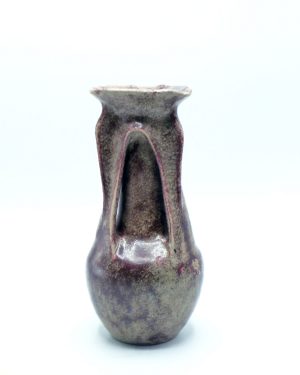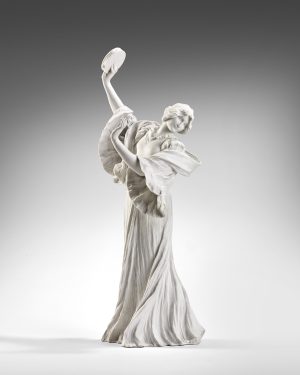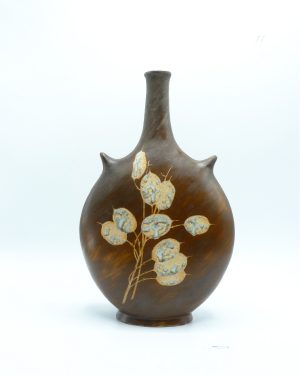“LA COMEDIE”, CIRCA 1905
Bronze with a brown patina. Lost wax cast by Hébrard
Signed, with foundry mark
Exhibition
Musée Galliéra. Exposition du Fer Forgé, du Cuivre et de l’Etain, 1905
According to Raymond Huard and Pierre Maillot, authors of Jules Desbois sculpteur, le cherche midi éditeur, January 2000, a bronze example, cast by Hébrard, would have been exhibited in 1905 in Venice and Berlin
A statuette, in plaster, is part of the collections of the musée du Petit Palais in Paris. 0,320 x 0,180 x 0,168 cm.
Bibliography
1905, Musée Galliéra. Exposition du Fer Forgé, du Cuivre et de l’Etain. A jug in pewter was executed in the workshops of SIOT-DECAUVILLE. The showcase 7 executed in copper by Henri Husson and contains: a coupe Champignon, a vase Les Nymphes , four statuettes Feuilles d’Automne, Comédie, Musique and La Fleur; Les Remous (?), a vase Satyres, deux plates Tête de femme and Nénuphars, a bowl Libellule and a small bowl with handles Libellule, a pitcher Le Houblon in pewter and copper. All these objects are edited by A.-A. HEBRARD. Showcase 9: Tobacco pot in pewter (SIOT-DECAUVILLE), a decorative plate in pewter belonging to the museum
The small bowl Libellule is illustrated in the Rapport Général de l’Exposition by Pierre ROCHE, p. 11
Raymond Huard , Pierre Maillot, Jules Desbois sculpteur, le cherche midi éditeur, the model in plaster is illustrated p. 105, under the number 16






































